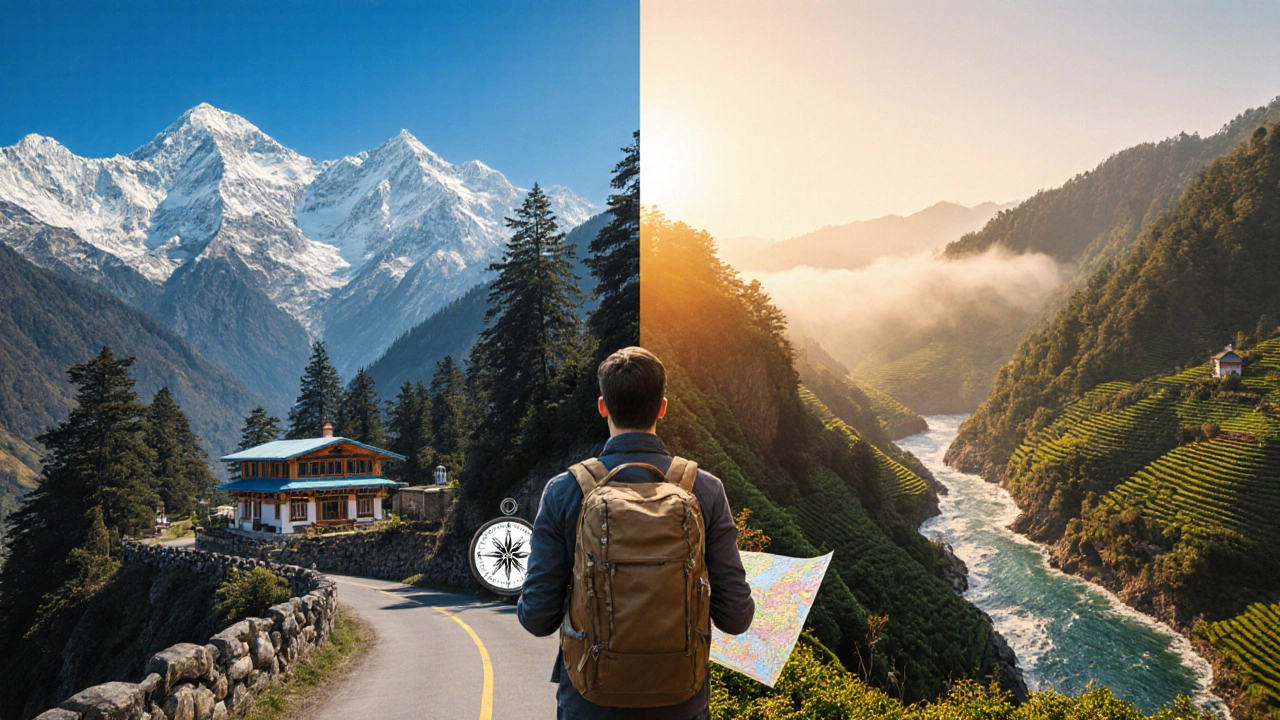North India vs South India: Key Differences That Matter for Travelers
When people talk about North India, the region stretching from the Himalayas to the plains of the Ganges, known for Mughal history, Punjabi cuisine, and bustling metros like Delhi and Jaipur and South India, the culturally distinct zone anchored by Tamil Nadu, Kerala, Karnataka, and Andhra Pradesh, with ancient temples, coconut-lined coasts, and Dravidian languages, they’re not just naming regions—they’re describing two entirely different travel experiences. One isn’t better than the other. But if you don’t know the difference, you’ll end up expecting monsoon rains in Rajasthan or asking for dosa at a Delhi dhaba. North India vs South India isn’t a debate—it’s a map you need to read before you book your ticket.
Think about food. In North India, the staple is wheat: roti, paratha, naan, and rich curries thick with cream, butter, and dried fruits. In South India, rice rules: idli, dosa, sambar, and coconut-based chutneys dominate breakfast tables. One region uses ghee like oil; the other uses tamarind like salt. Then there’s language. Hindi might be the national language, but in Tamil Nadu or Kerala, people speak their mother tongues first. You’ll hear Kannada, Telugu, Malayalam, and Tamil everywhere—English helps, but local phrases get you farther. And temples? In the North, you’ll find grand Mughal-inspired mosques and Sikh gurdwaras. In the South, towering gopurams covered in colorful gods, with strict dress codes and rituals that haven’t changed in centuries. These aren’t just architectural styles—they’re living traditions.
Adventure looks different too. In North India, the Himalayas offer high-altitude treks like Kedarkantha and Markha Valley, where you’ll need guides, permits, and warm gear. In South India, the Western Ghats give you jungle trails in Wayanad, waterfalls in Munnar, and wildlife safaris in Bandipur—all with humid air and monsoon greenery. Beaches? Goa is the party hub, but Kerala’s backwaters offer quiet houseboat rides you won’t find in the North. And while Delhi and Mumbai buzz with nightlife, Chennai and Kochi have evenings that end with temple bells and street-side filter coffee.
What you’ll find below are real traveler stories—safety tips for Mumbai vs Delhi, why Nagpur is called the Heart of India, how to eat without getting sick no matter where you go, and which beaches and heritage sites are worth your time. These aren’t generic lists. They’re lessons learned by people who got lost in South Indian temples, missed buses in North Indian towns, and ate the right street food at the right time. Whether you’re planning your first trip or your tenth, this collection cuts through the noise. You don’t need to love both regions. You just need to understand them.
